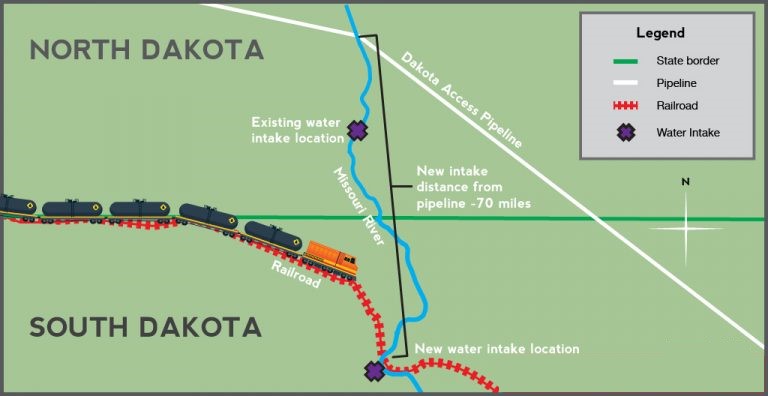The Hill recently published an opinion column by Mike Faith, chairman of the Standing Rock Sioux Tribe (SRST), calling for the Dakota Access Pipeline (DAPL) to be taken “out of operation permanently.”
But while exclusively focusing on political rhetoric and anti-fossil fuel ideology, the author fails to recognize the inconvenient facts and reality that bolster the case for Dakota Access and modern energy infrastructure development.
PIPELINES ARE THE SAFEST METHOD OF TRANSPORT
To start with, DAPL has been safely operating for more than three years, transporting up to 570,000 bpd from the Bakken oil fields to the Patoka Oil Terminal in Patoka, Illinois. The project was carefully reviewed by both state and federal regulators before receiving the necessary permits. Despite this, activists have continued to oppose the project, calling for operations to be suspended or shut down entirely. But these efforts, like Mike Faith’s op-ed in The Hill, are notably misguided and misinformed.
Shutting down pipelines won’t decrease demand for critical energy resources like crude oil and natural gas. Instead, blocking the construction of new infrastructure, or shutting down projects like DAPL that have safely operated for years, will only increase reliance on riskier, less efficient, and less environmentally-conscious methods of transport – like truck and rail. Activists seem to have a selective memory – ignoring the May 2015 oil train derailment near Heimdal, North Dakota that resulted in spilling 94,000 gallons and ignited several large explosions.
DAPL effectively reduced the need for up to 700 oil tanker train cars per day – transporting that oil by pipeline instead, a practice that experts have acknowledged results in significantly less carbon emissions and is much safer. But notably, rail cars transporting crude oil from wells owned by Native American Tribes cross the Standing Rock Sioux Reservation without objection every day.
The U.S. Department of Transportation’s Pipeline and Hazardous Materials Safety Administration (PHMSA) concludes that pipelines “enable the safe movement of extraordinary quantities of energy products to industry and consumers, literally fueling our economy and way of life.” PHMSA also says pipelines are “one of the safest and least costly ways to transport energy products.”
NO THREAT TO WATER SUPPLY
Oil and natural gas pipelines crossed beneath the Missouri River upstream of the SRST’s reservation long before the Dakota Access Pipeline was built. As we’ve previously noted, DAPL’s Lake Oahe crossing runs adjacent to an interstate natural gas pipeline built in 1982. Further upstream there are at least four other pipeline crossing along with a major refining complex located adjacent to the river. But unlike DAPL, the SRST didn’t subject these projects to months of disruptive protests or lengthy litigation.
Over their two-year rigorous permitting and review of DAPL, the U.S. Army Corps of Engineers found that the materials and methods to construct the pipeline pose minimal risk:
“Given the HDD approach used for both crossings and the avoidance of impacts that results from this technique, the attempt to cross at a narrow expanse of the river further limiting risk, the reduced potential for impacts resulting from the HDD process, movement of a pump station away from the River at the request of the Corps, the necessity to cross the Missouri River in at least one location, and the federal programs governing response actions, the risk to water resources from this crossing are minimal.”
Perhaps even more significant though is the SRST’s decision to relocate its water intake facility less than two miles downstream of a railroad bridge used to carry oil tank cars over the river. Statistically, pipelines are 451 times safer than rail according to the U.S. Department of Transportation, yet the tribe is more concerned about the Dakota Access Pipeline—located nearly 70 miles away –than it is about a railroad located within eyesight of its water intake plant.
Rather than politicizing our nation’s energy and economic security, policymakers must ensure critical energy infrastructure projects like DAPL have regulatory certainty. Developers who invest billions of dollars, after meeting or exceeding all safety standards and receiving the necessary permits, should have confidence that their investments will be able to successfully operate without constant litigious challenges and unnecessary interruptions.

